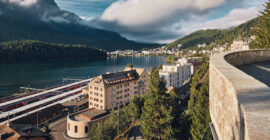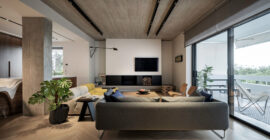Transitional spaces
The private vacation home is located on the western side of Antiparos, facing the sea, enjoying unobstructed views of the nearby island of Paros.
Design Approach
Antiparos keeps limited exposure to mass tourism, and the visitors, the island caters to for seasonal stay require their vacation homes to be equipped with the same amenities they are accustomed to from living in the city. Concurrently, the site is bound by strict building regulations regarding the form and materials of new constructions, because of its adjacency to the vernacular Ayia Kyriaki chapel.
Interior & Exterior Organization
The building is laid out on one level only, bringing together the seasonal inhabitants and the outstanding Cycladic landscape. The floors extend seamlessly from the indoor to the outdoor areas; this connection is further highlighted by generous transitional spaces, sheltered under pergolas. The openings, whose number and size had to be kept limited due to local regulations, provide views and outdoor connections to all the main rooms; dark shutters on their inner side are consistent with the local building tradition. The lounge, the kitchen, and the master bedroom are oriented towards the view, together with the outdoor living spaces and the swimming pool.
Material & Lighting
Inside, all walls are clad in grey facing applied by hand; strategically positioned openings on the ceiling bring abundant natural light to the interior, illustrating the rustic treatment of the vertical surfaces, whose appearance changes according to the time of the day. The color palette of the furniture includes opposing black and white tones, complemented by the texture of natural wood and woven straw. The hard surface of the floor is treated in cement facing and comes at a stark contrast to the natural sloping ground.
Artisanal local stone on the exterior surface of the walls, matched with sensible, discreet landscaping, complete the architectural impression, whose objective is to remain consistent with the principles of traditional island building. The biggest challenge in this project was to merge tradition with modernity, high architectural aesthetics with cutting-edge mechanical equipment; at all times, the reference had to be the sparse Cycladic landscape, local materials and relaxed island living.





